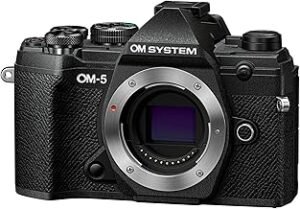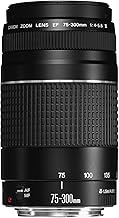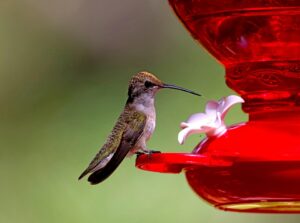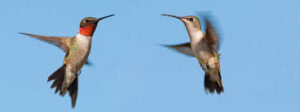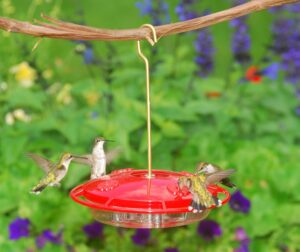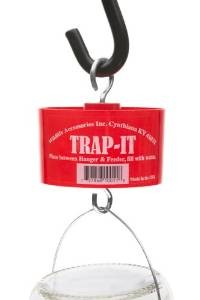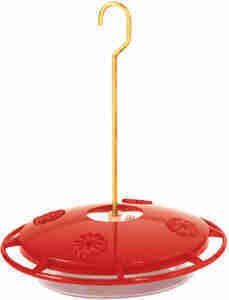Everything you need to know about hummingbird feeding
Each year, especially when the hummingbird migration starts and hummingbirds begin their trip back north, hummingbird feeding will become a major pastime for many backyard birders.
And each year more and more hummingbird feeders seem to take up residence in more and more backyards.
To help you with your hummingbird feeding experience, I will try to answer some of the more frequently asked questions and talk about some of the topics that people have shown an interest in, related to feeding hummingbirds.
These categories are actual search phrases people have used in their quest to find answers about hummingbird feeding.
Hummingbird feeding in Spring
Hummingbird feeding in spring should begin according to the hummingbird migration.
Migration starting times for hummingbirds vary by species. But many Ruby-throated hummingbirds start their northward migration in March and April so mid March is a good early time to start hummingbird feeding in spring.
You can start a week or two later if you live in a more northern part of the country.
When hummingbird feeding in spring only fill your feeder about 1/3 full or less. This way you won’t be wasting too much nectar while you are waiting for the first hummingbird to arrive.
When should I start feeding hummingbirds?
Month to start feeding hummingbirds
Here are some general guide lines on the hummingbird migration to answer the question of when should I start feeding hummingbirds and the month to start feeding hummingbirds, according to where you live.
If you live in the southern parts of the country mid march is a good to start feeding hummingbirds if you want to attract some of the early migrating birds.
Along the Gulf coast a few hummingbirds start showing up in late February, but there are not many sightings until the first part of March.
About the first part of April the hummingbird migration starts to reach into Virginia, Kentucky and Missouri.
By the middle of April the hummingbird migration is into Ohio, Indiana and Illinois and by theend of April hummingbirds can be found as far north as the great lakes and in the New England states.
By the first part of May the hummingbird migration is into northern Michigan and Canada.
When do you start feeding hummingbirds?
I live in northern Ohio and start putting out feeders towards the end of April.
By this time some of my early blooming hummingbird plants are starting to bloom and I can be fairly sure that there are already a few hummingbirds in my area.
When do you start feeding hummingbirds? ….start feeding them about the time you expect to see them in your particular area.
Refer to the above information under the heading “When should I start feeding hummingbirds? Month to start feeding hummingbirds ” to get a general idea.
Hummingbird feeding liquid
The hummingbird feeding liquid, that is used in hummingbird feeders to attract hummingbirds, is a simple sugar and water solution.
The hummingbird feeding liquid should only contain sugar and water and not any other additives.
It is made up of a ratio of 1 part sugar to 4 parts water. This ratio will produce a hummingbird feeding liquid that will closely resemble the nectar found in flowers.
Hummingbird red food color
Hummingbird red food color refers to the red food coloring or dye that is used in most commercial hummingbird nectar recipes. The store-bought nectar uses the red dye to help attract hummingbirds to your feeder.
Note: hummingbird red food color is totally unnecessary and can even harm your hummingbirds, so do not use it.
Hummingbird food clear
Hummingbird food clear refers to hummingbird nectar that does not use the red dye to color the nectar. Without the addition of the dye to the hummingbird nectar, the water and sugar will produce a clear nectar.
More and more companies are offering clear hummingbird food as a response to the growing belief that the red die will harm the hummingbirds.
The red dye in the hummingbird food is not necessary to attract hummingbirds. Use a feeder that has red on it or tie red ribbon to your feeder or add some red silk flowers to your feeder to attract hummingbirds.
Avoiding red hummingbird nectar will insure that you will not harm the hummingbirds you are feeding.
How do we make hummingbird food
Making your own homemade hummingbird food is easy to do. All you need is ordinary white granulated table sugar and tap water.
Don’t add anything else to the nectar recipe.
in a pan on your stove, add 1 part sugar to 4 parts water.
stir in the sugar until it is completely dissolved, while bringing the hummingbird food mixture to a boil.
boil the nectar for about 2 minutes then remove from the heat to cool.
when your homemade hummingbird food is cool you can add it to your feeder.
This will prevent the nectar from fermenting as quickly and make it last longer in your feeder before needing changed.Boiling the the hummingbird mixture for about 2 minutes will release the chlorine from the water and kill any mold spores that might be in the sugar.
Click on the link hummingbird feeding /feeder cleaning to read about changing the nectar and cleaning your feeder, two important issues when hummingbird feeding.
You will have to change the nectar every now and then or the nectar will get moldy. The above article will tell you how often to change it and how to keep your feeder clean.
Feeding hummingbirds maple syrup
Never use maple syrup, honey, molasses, corn syrup, brown sugar or artificial sweeteners when hummingbird feeding – just plain white granulated table sugar.
Feeding hummingbirds corn syrup
Never use corn syrup, maple syrup, molasses, honey, artificial sweeteners, brown sugar or anything else when hummingbird feeding. Use only white granulated table sugar, the stuff you put on your breakfast cereal.
Choosing a hummingbird feeder
Now that I have answered How do we make hummingbird food?…….let me give you some advise about choosing a hummingbird feeder.
Click this link choosing a hummingbird feeder to learn what type of feeder is best. You will want one that keeps away ants, bees and wasps, and is also easy to take apart and clean.
Where should I put hummingbird feeders outside?
The ideal location for hummingbird feeding, would be close to a window in your house so that you can watch the hummingbirds when you are indoors.
The feeder should also be hung in a shady spot if possible, to keep the nectar from spoiling as soon.
Hummingbirds are more likely to spot feeders that are hung near plants that attract the hummingbirds.
If you use more than 1 feeder for hummingbird feeding, hang them so that both feeders can’t be seen at the same time.
Hummingbirds are very territorial and will guard the feeder by chasing off other hummingbirds that try to use the feeder. This is usually done by a dominate male hummingbird.
If the hummingbird can find a spot where it can see both feeders, it will be able to guard both of them at the same time. This will make it difficult for other hummingbirds to sneak in to get a drink.
To hang the feeders on opposite sides of the house is a good way to prevent this aggressive hummingbird behavior and will improve your hummingbird feeding.
I hope this answers the question Where should I put hummingbird feeders outside?
Feeding habits of hummingbirds
Ruby throated hummingbird food intake
Besides the sugar water in your feeder, hummingbirds also feed on flower nectar, insects and spiders.
When flowers are in bloom, the hummingbirds won’t be visiting your feeder as often. Nor will they when the nesting season begins.
Click on the link hummingbird seasonal feeding patterns for more information about the feeding habits of hummingbirds.
How often hummingbirds feed depends on the caloric content of the food they are eating. Flower nectar from different kinds of flowers vary in the amount of calories they contain. The more calories they consume at each meal, the less often they have to feed.
In general though, a hummingbird will feed every 10 to 15 minutes, all day long. They might eat up to their body weight in food each day. Especially when getting ready for the migration when they will sometimes double their body weight.
Click the link what do hummingbirds eat to read more on the feeding habits of hummingbirds.
Why is my hummingbird food jelling?
I searched the web and could find no answers for why is my hummingbird food jelling.
This seems to be a problem though as 22 people a day are searching this term.
My best guess would be you are adding red jello to your nectar. Stop it and your problem will dissappear.
Let me repeat, don’t use anything but white granulated table sugar and water in your hummingbird nectar. Follow this advise and you won’t have any trouble hummingbird feeding with your homemade hummingbird food.
When to stop feeding hummingbirds
When to stop feeding hummingbirds is about 1 to 2 weeks after you see the last hummingbird at your feeder.
If you leave your feeder out after your hummingbirds are gone you might catch a straggler passing through your area that got a late start on his migration south.
Hummingbird feeding in the fall will not cause them to stay longer than they should. This is a common misconception but, I just won’t happen.
The fall migration is triggered by a decrease in the length of daylight, not by the scarcity of food. They will begin migrating even when there is still natural food available, probably to ensure that they will be able to find food along the way south.
So keep hummingbird feeding, keep your nectar fresh and your feeder clean and enjoy your hummingbirds as long as they are still in your area.
And remember when to stop feeding hummingbirds is about 1 to 2 weeks after you see the last hummingbird at your feeder. By then you can be fairly sure the birds are done going through your area on their way south.

Product Features
Converts almost any container into a hummingbird feeder
Red tip is attractive to hummingbirds
Rubber stopper is tapered for a tight fit
Simple design makes this an easy craft project
Terrific and easy project for scout groups, schools, church groups, etc.
All you need is an opening into which you push the rubber stopper on the feeder tube. The stopper is tapered and measures 1″ at the top and 5/8″ at the bottom.Product Description (hummingbird feeder tubes) for hummingbird feeding
It’s easy to do your own hummingbird feeding and make a feeder with these inexpensive, foolproof hummingbird feeder tubes. Use any type bottle, jar or other container for liquid.
The curved plastic hummingbird feeder tubes have a red tip to attract hummingbirds. Potters will find these hummingbird feeder tubes perfect for completing a handmade feeder.
For the crafts-minded person, plastic pop bottles make excellent containers. You can also use glass jars with lids. Just drill a hole in the lid and insert the hummingbird feeder tubes.
Important: make sure that the rubber stopper fits tightly into your container to prevent leakage at the tip.
You get a total of 12 hummingbird feeder tubes inserts in this offer, each one consisting of a transparent feeder tube, a red cap with feeding hole and a rubber stopper. They are assembled and ready to use.
Hummingbird feeding will be a lot more fun by making your own feeders with these hummingbird feeder tubes for making your own feeders.
I hope you enjoyed this article on hummingbird feeding.

 Aspects 367 Hummzinger Ultra Hummingbird Feeder, 12-Ounce
Aspects 367 Hummzinger Ultra Hummingbird Feeder, 12-Ounce With Nectar Guard
With Nectar Guard has patented Nectar guard tips which are flexible membranes attached to the feed ports that prohibit entry from flying insects, but allow Hummingbirds to feed as usual.



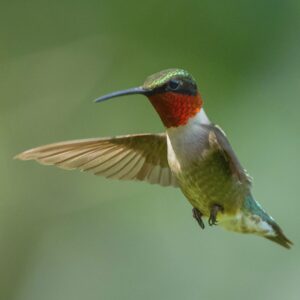 States.
States.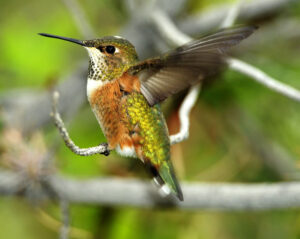 personality.
personality.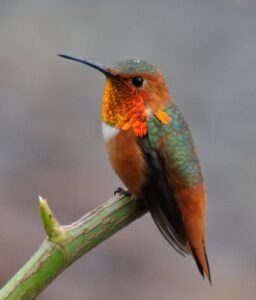 weighing only about 3 grams, was first spotted in Holmes County. The bird frequented a feeder at Mae Miller’s home, where it became a sensation among birders.
weighing only about 3 grams, was first spotted in Holmes County. The bird frequented a feeder at Mae Miller’s home, where it became a sensation among birders.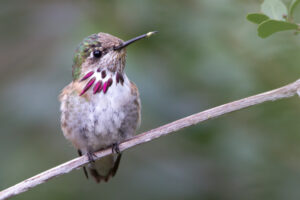 of this species: one in Chillicothe in 2002 and another in Delaware County in 2017.
of this species: one in Chillicothe in 2002 and another in Delaware County in 2017.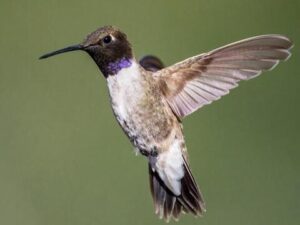 Hummingbird, this rare visitor’s identity was confirmed through careful measurements during banding.
Hummingbird, this rare visitor’s identity was confirmed through careful measurements during banding.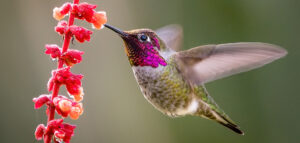 Columbus, where the bird stayed for over a week at Gerry and John Brevoort’s yard.
Columbus, where the bird stayed for over a week at Gerry and John Brevoort’s yard.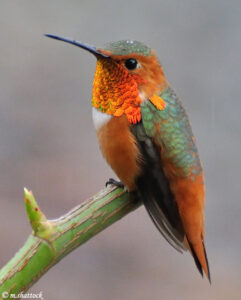 migrate eastward during fall or winter.
migrate eastward during fall or winter.